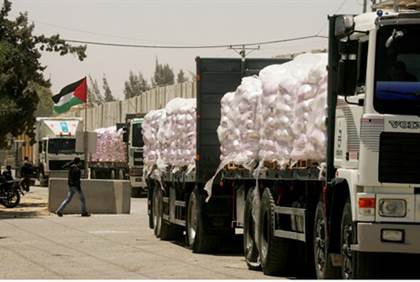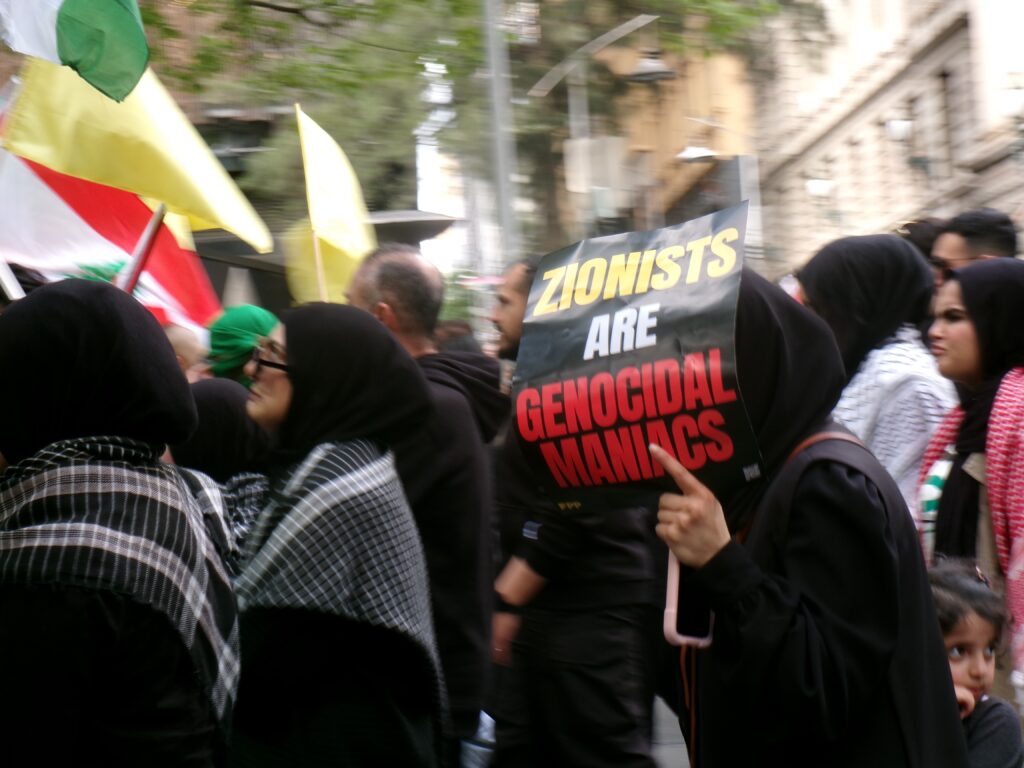IN THE MEDIA
Delivering aid to Gaza
June 4, 2015 | Glen Falkenstein

Glen Falkenstein
Online Opinion – posted Thursday, 4 June 2015
http://www.onlineopinion.com.au/view.asp?article=17401
Gaza needs aid. Last year’s conflict between Israel and Hamas left affected residents homeless, compounding already dire humanitarian challenges facing the Strip. Most of the damage occurred in a concentrated 3km zone adjacent to Israel, which launched strikes against Hamas in response to the group’s firing rockets at Israeli civilian areas.
The Gaza Reconstruction Mechanism (GRM) was established last year by the UN and accepted by Israel, Hamas and the Palestinian Authority (PA) as a means for rebuilding the affected areas in Gaza, with billions of dollars in aid already pledged by the international community.
Al-Jazeera has reported that only a quarter of the aid pledged has been delivered to Gaza. An IMF report released last month indicated that “unfilled donor pledges” are a reason that “the reconstruction process in Gaza is moving far more slowly than expected,” noting that “donor’s own priorities and development agendas limited alignment of aid with national development priorities.” Donors had only given a fraction of the aid promised, with the World Bank indicating there was no data available for some of the pledges made.
The aid group Shelter Cluster Palestine reported that as of March, there has been progress in repairing damaged homes – with the owners of around half of the 144,200 housing units requiring repair assistance having gotten what they need and presumed to have made the needed repairs. However, almost no rebuilding of the 12,410 housing units that were completely destroyed has been completed.
The President of the Qatari National Committee for the Reconstruction of the Gaza Strip, a major donor of aid to Gaza, has slammed the GRM as ineffective, claiming that 90% of the cement received has been sold on the black market.
Reports have surfaced of Hamas’ boasting of rebuilding military training sites near Gaza’s north, east and west borders, as well as reconstructing tunnels into Israeli territory with the resources and heavy machinery available.
All these factors further exacerbate the plight of Gaza’s population and it is incumbent upon the international community to ask why the goodwill of many nations, Australia included, is not working as well as it should.
While many automatically assume Israel’s blockade of Gaza is the main problem, this is not the case. Israel restricts the entry of a limited number of goods into the Strip. The Co-ordinator of Government Activities in the Territories (COGAT) publishes a list of restricted items – these do not include aid items such as food, medicine or consumer goods, which may be delivered to Gaza without restriction.
The list does restrict certain ‘dual-use’ goods that can be used to arm militants or create infrastructure to attack civilians. This includes cement, which Hamas [which has pledged to prepare for another assault on Israel] has employed to build military fortifications and tunnels designed to facilitate terror attacks both before and after last year’s conflict.
However, under the GRM, Israel agreed to greatly ease restrictions on the import of cement and other building supplies – requiring that international NGO’s or the PA supervise distribution so that aid is not diverted to military purposes.
In spite of the ongoing security risk posed by Hamas, tens of thousands of tonnes of cement have been delivered to Gaza, reportedly more than can legally be bought under the GRM, along with ample steel and other building materials. On April 29, 15,000 tonnes of building material were delivered to Gaza, the largest shipment since last year’s conflict erupted.
So why isn’t the aid bringing better results for Gazans?
Arab League Secretary-General Nabil Elaraby stated plainly on February 22: “The internal differences and the absence of co-operation between the Palestinian Authority and Hamas are behind the delay in reconstructing the Gaza strip.”
The GRM envisioned the PA returning to the Strip, monitoring the borders, supervising aid and also taking charge of organising the reconstruction of homes that were destroyed. The whole program was predicated on viable co-operation between Hamas and the PA and this has not occurred.
Robert Serry, the UN’s special co-ordinator for the Middle East peace process made this clear, saying “We have a (UN) mechanism that is working, but almost everything else is not in place.”
This is not surprising, given the PA are not even free to move within Gaza. When a delegation of PA ministers visited the Strip in April to coordinate paying civil servants and further operations in Gaza, they departed for the West Bank the next day, saying Hamas had kept them under effective house arrest.
A recent report from the Association of International Development Agencies indicates that some international donors have been hesitant to disburse their reconstruction pledges due to the relationship between Hamas and the PA.
Earlier this year, the power station supplying Gaza was shut down when the PA insisted that Hamas pay fuel taxes to run it after a $10 million donation by Qatar to cover the tax expired. Hamas did not want to use their resources to pay the tax, and have instead continued utilising cement and other assets to solidify their militant infrastructure.
Not only is that aid not helping Gazans as much as it should; its diversion for military purposes is the very thing the GRM was designed to prevent.
The GRM was put in place to make things better. Aid contributors now need to work constructively with international agencies, Israel and others to get the GRM back on track by pressuring Hamas to allow PA officials to oversee the allocation of aid in Gaza as a priority. This is the only way Gaza can be rebuilt as was intended and ensure donors their money is not being diverted to fuelling another round of Israel-Hamas conflict which would again lead to tragic suffering in Gaza.
Tags: NGOs





